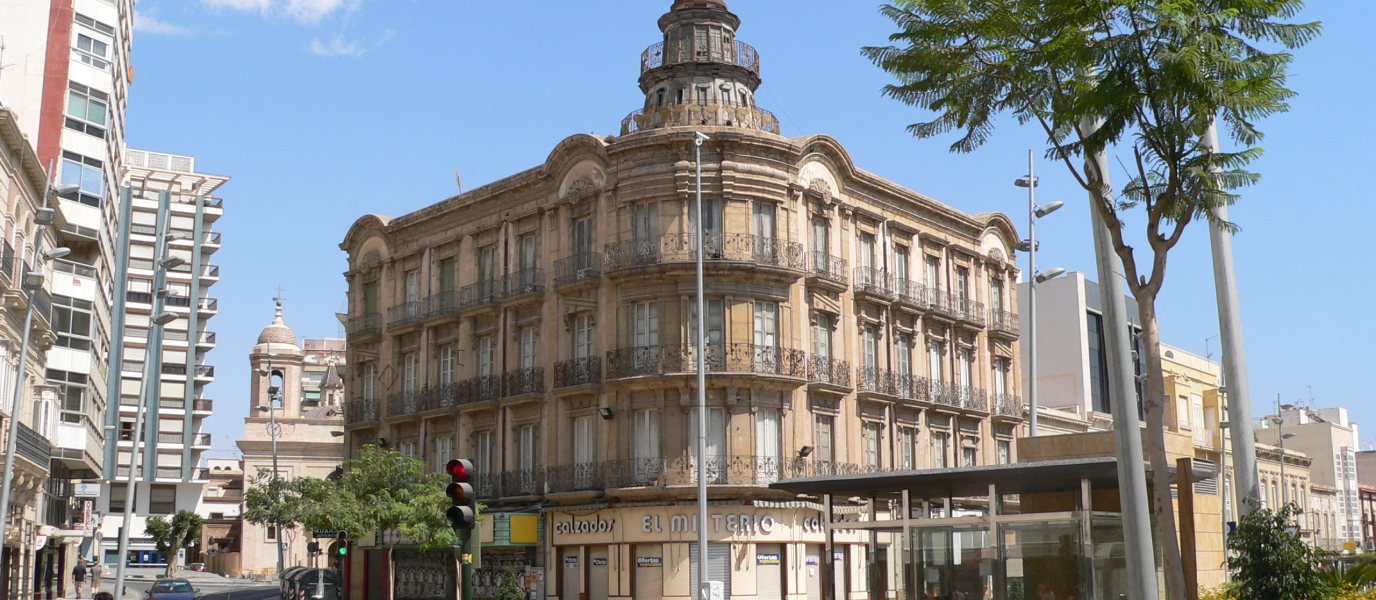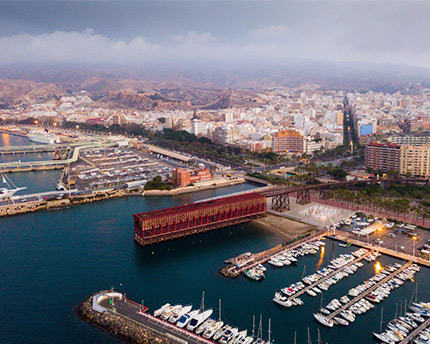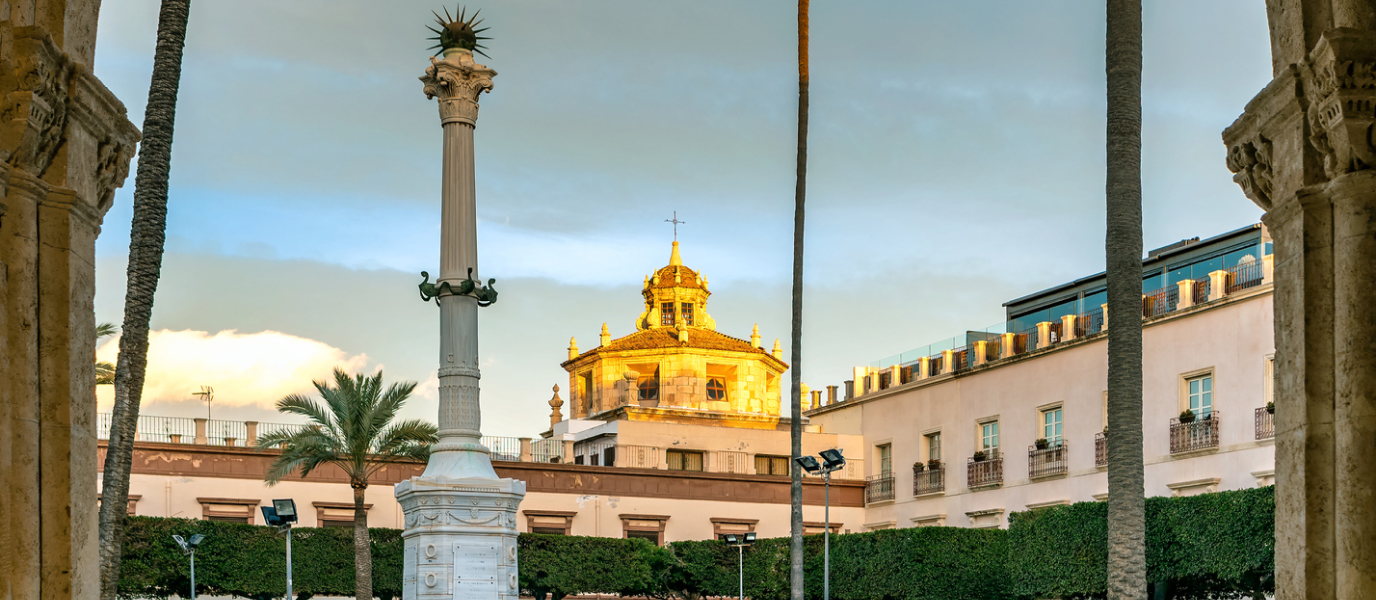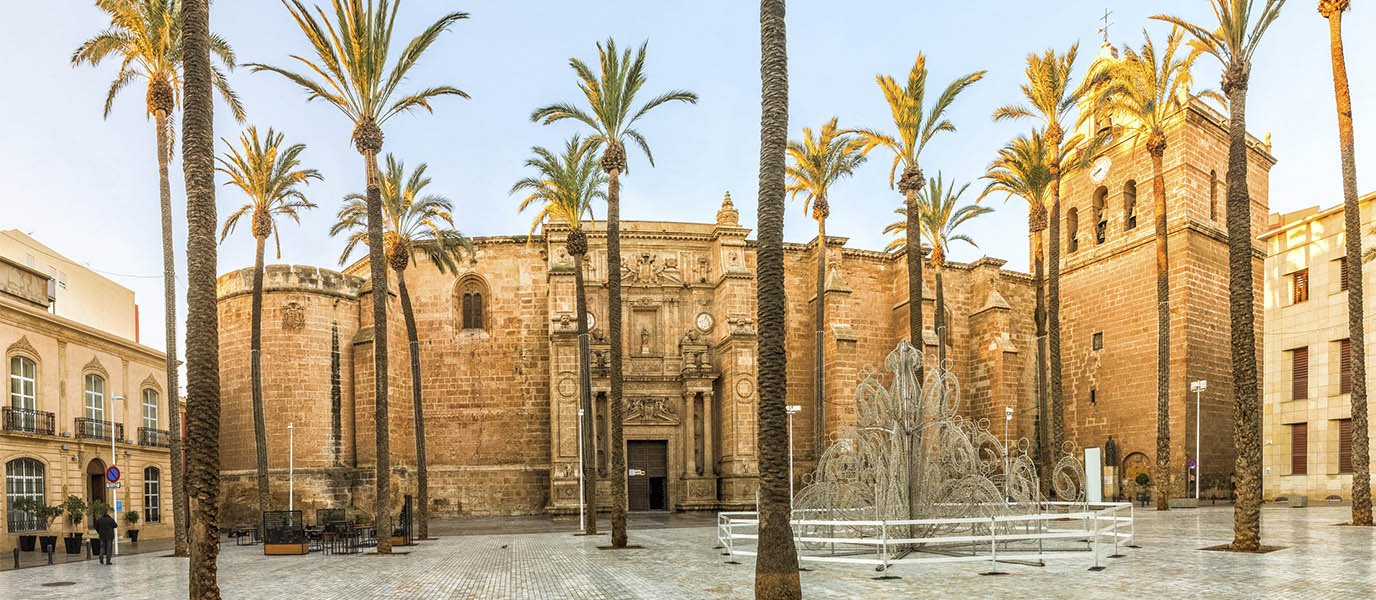The house of the Rapallo Campos family, better known as The House of Butterflies in Almería, is one of the jewels in the crown of the provincial capital. Built at the beginning of the 20th century, for many years the House’s four floors garnered it the proud appellation of ‘Almería’s tallest building’. Although it has been surpassed in height since then, it still stands proudly at Puerta de Purchena, a crossroad of main streets in the historical quarter of the city and is now a national ‘Place of Cultural Interest’.
The House of Butterflies: from an inn to the home of the bourgeoisie
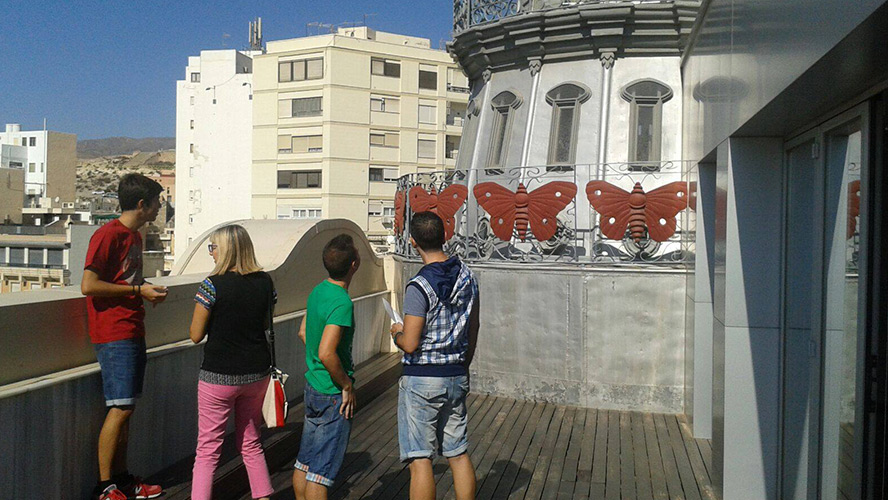
Prior to the construction of the House of Butterflies, the crossroad of Puerta Purchena was dominated by a dilapidated inn on the point of collapse. The inn was known as The Álamo and became an eye-sore when the city grew in wealth thanks to the development of mining and other mercantile activities in the region. This led to a new social class that quickly developed a love of all things ‘cultural’ and artistic: the bourgeoisie. One family of this budding class was the Rapallo Campos family and they decided to buy the The Álamo, tear it down and commission the architect Trinidad Cuartara – the most famous architect in Almería – to replace it with a family home worthy of their status. Cuartara did not just want to embellish the city centre with a beautiful building, however. Instead, he took it upon himself to design a symbol of the political and economic power that had fallen into the hands of the bourgeois class and he gave the new home an ostentatious design replete with ornamental excess.
The famous glass in the dome
In 1911 work on the most prestigious house in Almería was completed and in order to celebrate its completion, the owners of the new house and its architect decided upon a unique gesture. The architect bought a humble glass out of which he, the owners and the workers drank wine and gave toasts to this magnificent building’s completion. Once the toasts were over, the architect had the glass installed on top of the dome of the building and it remains there to this day, more than 100 years later. Nothing has managed to shift it from its original setting, neither the wind, nor the destructive bombing raids that destroyed much of the city during the Civil War.
Some modern butterflies for the façade
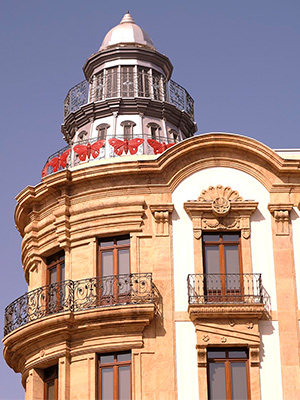
The façade of the building doesn’t cease to impress, from its base to the top of the dome. Fundamentally, it is a textbook example of bourgeois palatial design: at its feet there is a pedestal that supports the structure, above there are rooms with enormous windows and balconies, and it is crowned with a cornice of large eaves.
This house is a particularly interesting example of the period’s culture since it features a headframe, a kind of bolstering scaffolding used in mining to hold high voltage cables or pullies. As a nod to the region’s fame as a mining community, the House’s architect had this headframe divided in two and placed at the top of the dome where the famous glass now resides.
The House of Butterflies consists of four floors decorated with the kind of Modernist furniture that was most popular at the time. This furniture reflected the desire to take images from nature and reproduce them in metal or glass. The filigree on the handrails of the balconies and the 13 enormous iron butterflies that decorate the upper part of the house reflect this desire to imitate nature too. It’s worth noting that, although they are visible from the street, today visitors can gain access to the upper part of the building to see this marvellous iron butterflies up close. The same tastes can be seen in other buildings in the city, such as the Central Market of Almería and the Train Station.
The views from the uppermost part of the headframe are not to be missed. The emblematic Puerta Purchena; the Paseo de Almería, with its curiously pruned trees in the form of a hockey puck; the statue of Nicolás Salmerón, president of the First Republic of Spain; and, of course, the backdrop of the clear blue waters of the Mediterranean, are all sights to be contemplated from the top of the House of Butterflies.
The rebirth of the House of Butterflies
This noble building fell into disrepair during the 70s and 80s when the proprietors decided to turn it into a block of flats and rent them out to a variety of people. Almost twenty years later, after many ups and downs and urban projects, the building ended up in the hands of the bank Cajamar Caja Rural. Two years after acquiring the house of the Rapallo Campos family, renovation began with the intention of installing a new foundation and using the building as a centre for commercial and touristic purposes. In 2011 renovations were completed on this new cultural centre and the house opened its doors to guided visits so that locals and tourists could enjoy this small but important piece of Almerian history once again.




































































